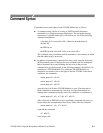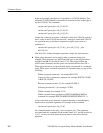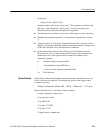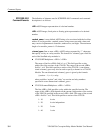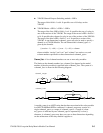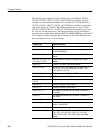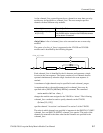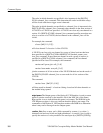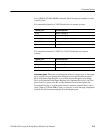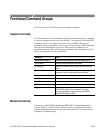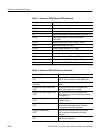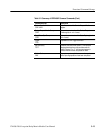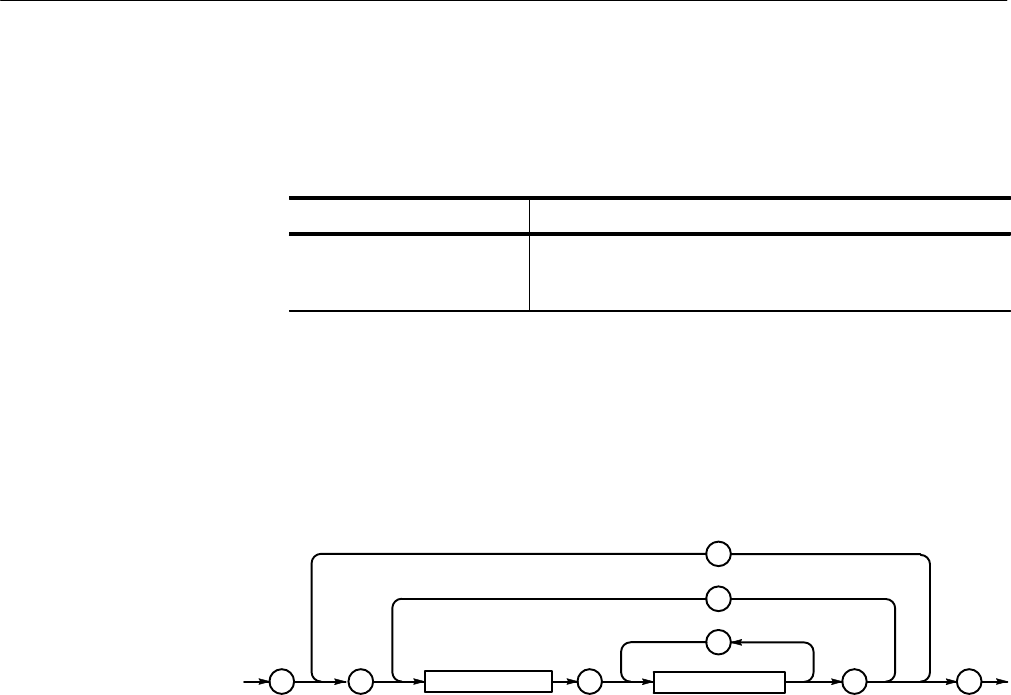
Command Syntax
VX4380 256-Crosspoint Relay Matrix Module User Manual
3–7
As the <channel_list> syntax diagram shows, channels on more than one relay
module may be specified in a <channel_list>. The next example specifies
channels on three different relay modules.
<channel_list> Channels Specified
(@m1(1!1), m2(4!6),
m6(3!13!2))
Channel 1 of section 1 on the VX4320, Channel 4 of section 6
of the VX4330, and the channel on the VX4380 that connects
row 3 to column 13 in section 2.
<list_of_lists > A list of <channel_lists> to be executed on one or more relay
modules.
The syntax of a <list_of_lists> is supported on the VX4350 and VX4380
modules and is described by the following diagram:
<list_of_lists>
( @ (
,
) )<module_name>
<channel_range>
,
,
Each <channel_list> is identified by the @ character and represents a single
location in the scan sequence. The syntax contains a list of channels that are
operated simultaneously when the single location in the scan sequence is
reached.
A maximum of eight channels may be specified in each <channel_range>.
As mentioned above, the module names used in <channel_list>s may be
specified with a [ROUTe:]MODule[:DEFine] command. The command
route:module:Define rfmux, 1
changes the module name assigned to the VX4320 to “rfmux”. The following
<channel_list> can then be used to specify channels on the VX4320.
(@rfmux(3!1,2!2))
specifies channel 3 in section 1 and channel 2 in section 2 of the VX4320.
The order in which channels are specified is important in the [ROUTe:] CLOSE?
<channel_list> and [ROUTe:]OPEN? <channel_list> queries. The states of the
channels are returned in the same order that the channels are specified in the
<channel_list>.





